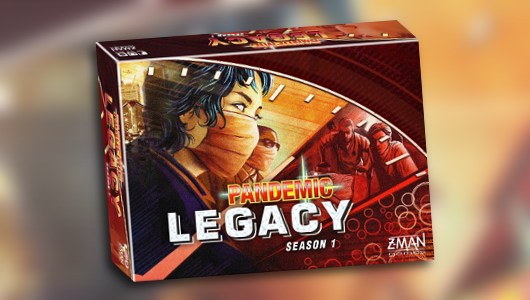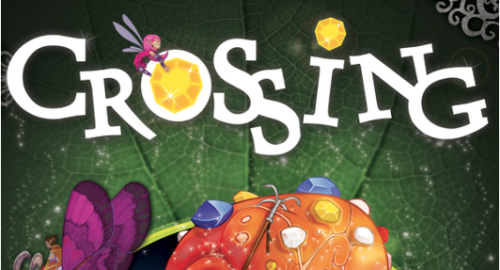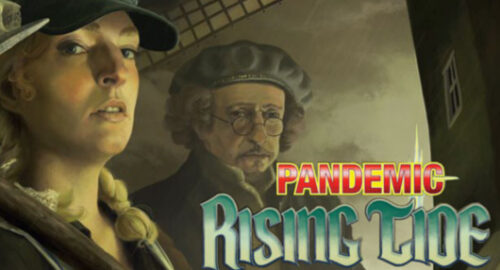I’m sure most people reading this review will be aware but there exists a website known as BoardGameGeek. A compendium of practically every board game released, it is the go to place for rules queries and advice on what to buy. One of its most frequented and useful features is its ranking of every game on the site. The list, based on visitor ratings, is incredibly robust with some fancy algorithms ensuring that for a game to be ranked highly it needs not just great reviews but a lot of them. When a game reaches the number one position it stays there for a while. Enter Pandemic Legacy. In the short few months since its release it has zoomed up the rankings dethroning Twilight Struggle from the coveted top spot, a game that has held the title for over 5 years. It has brought into question the fairness of BoardGameGeeks algorithms. Is Pandemic Legacy, a game only released last October really the best game money can currently buy?!
Yes. Completely and utterly yes.
• Designer: Matt Leacock and Rob Daviau
• Publisher: Z-Man Games
• Number of Players: 2-4
• Playing Time: 60 minutes

To explain what Pandemic Legacy is and why it is so damn good we need to go over a little bit of a board game history which I’m sure is everyone’s favorite type of history. Back in 2011 long time Hasbro designer Rob Daviau decided to do something a little bit different with the latest release of Risk. Rather than create yet another licensed version of the game he created Risk Legacy. The idea was to embrace the metagaming that goes on between every board game we play yet is completely ignored by the games themselves. How you always gang up on the winner of the previous game you played. How your friend is always always a spy in Resistance even when they’re not. How everyone knows that you always lie in Sheriff of Nottingham. What if the rules of the game itself paid attention to these real world grudges? What if the effects of one game demonstrably affected the next?
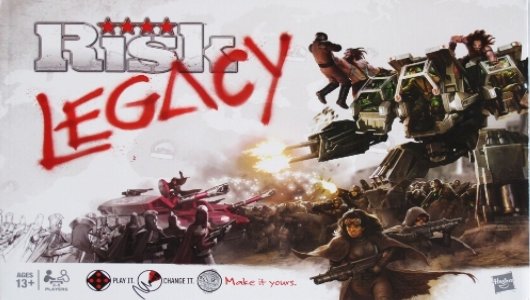
Risk Legacy strapped on these ideas of persistence to the already well established Risk rules set. Over 15 games players duke it out with the results of each game indelibly marking and changing the board. Stickers of cities are placed. Names of continents are written in permanent marker. Cards that are permanently removed from the game are torn in half and thrown in the bin never to be seen again. Major game events involve opening sealed compartments adding new secret rules and components to the game. The game was met with mostly critical acclaim but it was such a change of pace that it rubbed many people up the wrong way. A game that encouraged you to destroy components AND had a limited life span of only 15 games?! Blasphemy! However, love it or loathe it Risk Legacy has undeniably changed the board gaming scene. In the years following its release Rob Daviau has left Hasbro to work on an original Legacy game, Seafall, which is due to be released this August. During the development of Seafall, Daviau has made a brief excursion to team up with fellow game designer Matt Leacock and quickly churn out Pandemic Legacy. A brief excursion that has resulted in possibly one of the best board games ever released….

To talk about Pandemic Legacy I should probably first talk a bit about Pandemic which means, yes, more board game history. Pandemic, released back in 2008 by Leacock may not be the first board game ever to involve cooperation but for many people it was their first ever co-op game. The game sees you and up to three other players attempting to prevent humanity being destroyed by four virulent diseases. The games AI, so to speak, is simply two decks of cards that the players draw from. At the end of your turn you pick two cards from the good deck, city cards that enable to you to whiz efficiently around the board and ultimately cure the four diseases as well as event cards that provide you with various different one time benefits. After that you draw a number of infection cards from the bad deck which tell you which cities will get a scary little disease cube this turn. The twist is that hidden in the good deck are a number of Epidemic cards which are the games main escalation mechanic. They pretty much make everything worse. The number of infection cards you draw each turn goes up, one city gets a whopping three disease cubes in one go and all the infected city cards that have already been played get reshuffled and placed on top of the deck, liable to be drawn again. This escalation mechanic has in some form been utilised in most of Leacock’s games including Forbidden Island and Forbidden Desert.

Combine this with each player having variable powers and limited numbers of actions per turn you’ve got a neat little puzzle where you are torn between damage limitation and ultimately winning the game. Someone needs to go and treat diseases when they get out of hand. Each city can only hold up to three cubes of one colour at any time and if it goes over then cubes spread and outbreak to nearby cities. Too many outbreaks and you lose but outbreaks are also capable of chaining causing nearby cities that are also on three cubes to outbreak. Left unchecked too many outbreaks or running out of disease cubes are sure to end your game. However, simply treating diseases won’t win you the game, that can only be achieved by curing all four diseases. Yet to do that you need to collect four city cards of the same colour which you can probably only do by meeting up and trading on the board. Deciding who does what and when is the basic crux of the game and you’re always aware that the next epidemic card is just around the corner ready to screw up your plans.
Pandemic Legacy unsurprisingly then takes these initial rules and adds the ideas that Risk Legacy brought to the table. Persistence, permanent destruction of components and a limited life span, all of these things are included. Yet the rules have been tweaked and new features have been added to adapt the Legacy style of gaming to a cooperative board game and, as you can probably already tell it works fantastically. Be warned, Pandemic Legacy contains spoilers. It tells a story over a campaign that will take you anywhere between 12-24 games. I am going to avoid talking about any of these spoilers in this review focusing only on information made available to you in your first game and the new features it presents. Beyond that I may mention how the overall campaign made me feel or how I felt it worked in design terms but I will not mention any specifics. If you are incredibly conscious of spoilers then feel free to stop reading now. I wont take any offence. Just go check your bank balance. Ring up three committed friends and go buy Pandemic Legacy from your local gaming store.
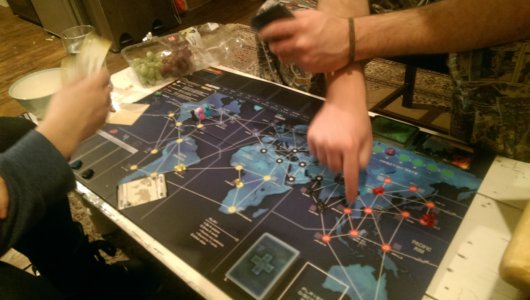
A campaign of Pandemic Legacy follows a year in the CDC. Each time you sit down to play you tackle one month of this year. Win the game and you move onto the next month. Lose and you get one more shot before moving on regardless, this is where that 12-24 games figure I mentioned above came from. Your first game really will feel a lot like vanilla Pandemic. You each pick a character with familiar abilities and whiz around the board trying to cure the four diseases before they defeat you. However there are a few nifty legacy features that are available right out of the box, i.e. no spoilers here guys! The first of these is city panic levels. I already mentioned above how outbreaks were bad news. You get one step closer to the fatal eight outbreaks and every adjacent city gets a cube too which could easily trigger a second, or possibly third outbreak all in one terrible turn. In Legacy outbreaks are even worse. Whenever a city suffers an outbreak you stick a little numbered sticker next to its name. The first sticker is kind of a freebie. The city is a panicking a bit but overall things are okay. Subsequent stickers however have real tangible effects on the game board. Rioting cities can no longer be accessed by plane and have to be driven into. Collapsing and Fallen cities are even worse requiring huge, possibly impossible penalties to simply enter at all. To make matters even worse if your character happens to be in a city when it outbreaks they get a permanent negative sticker – a scar. These scars could reduce their hand limit or cripple them in some other way. Oh…and if at any point your character would receive their third scar you forever remove them from the game. Not just remove them from the game you are currently playing but tear the card in half and throw it away. Harsh right?
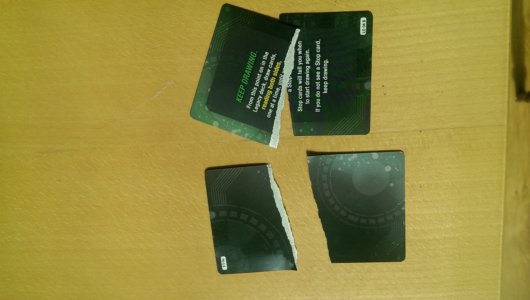
The other features present right from the off all help to balance Pandemic Legacy over its 12-24 playthroughs. See, as a competitive game Risk Legacy was somewhat self balancing. If one player got a couple of wins under their belt and therefore some in-game perks the other 3 or 4 players could just gang up on them. In Pandemic Legacy, with everyone working together this isn’t the case. With your performance in the game affecting the board so visibly the game could end up being quite one sided. A really bad game could leave whole sections of the map rioting and inaccessible sending you down a spiral of lost game after lost game. Alternatively the opposite could happen and you could set yourself up for 12, very easy games and barely have any challenge at all. Obviously neither of these options are desirable so some sort of rubber banding mechanism is required. This is primarily achieved through the games funded events. Events were present in the original Pandemic, one time power cards that were drawn from the player deck providing with a host of emergency abilities. In Legacy you begin each game with a certain amount of funding, which basically means how many event cards you put into the player deck. In your first game you’ll have four powerful event cards ready to help you out in times of need. Win a game and your funding goes down, lose a game and your funding goes up. It is a simple mechanic but it works really well. Overall in our Legacy campaign we were often bouncing between 0 and 2 funding, winning and losing games accordingly. It does a very good job of making sure the game never gets too easy or too hard. On top of this at the end of each game, win or lose, you’re offered a series of permanent upgrades. These upgrade stickers allow you to tailor the game to your needs. If you’re really struggling with treating diseases you can give a disease a positive mutation to make it easier from now on. Struggling to move around the map? Well maybe give a character a powerful upgrade or make one of your research stations permanent? The impressive choice of end game upgrades allows players to deal with, hopefully any dire situations that arise to ensure they always have some way of winning their next game.
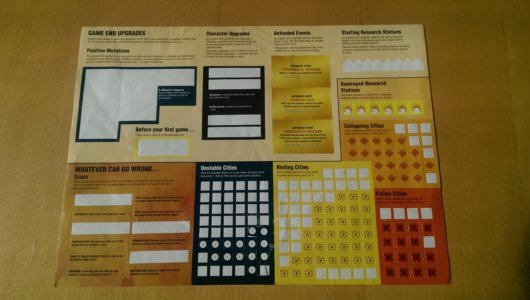
However, the biggest feature of Pandemic Legacy, and also its biggest departure from Risk Legacy is the inclusion of the Legacy deck. It is this deck that contains the games year spanning story. The deck is never shuffled and simply sits in the box ready to be looked at when the trigger on the card is met. When you open the box ready for your first game you’ll see the top card of the legacy deck informing you to turn over the card and read it “Before your first game in January”. Turning over these cards when instructed provides you with your briefings for each month and well as the objectives you’ll have to complete. Like I’ve already said in your first few months these objectives will feel very familiar to seasoned Pandemic players but before long the game will….change. See as well as providing you with the story the legacy deck provides you with all the other rules and component additions to the game. I mentioned way back at the start of the review that Risk Legacy had six sealed compartments to open when certain conditions are met. In Pandemic Legacy there are over 40 sealed compartments containing anything from rules to brand new pieces to add to the game.
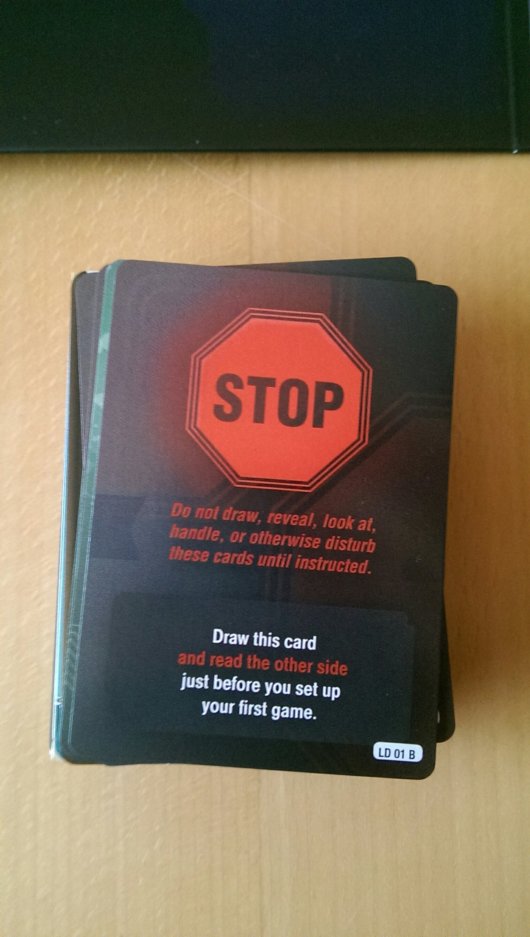
This provides the Pandemic Legacy campaign with absolutely fantastic pacing. Whereas Risk Legacy’s rule changes were rare and comparatively large, Pandemic Legacy drip feeds you new features on an almost constant basis. Hardly a month goes by without something new being added to the game. It gives the game an almost video game feel, with the associated learning curve. You get a nice tutorial level with the subsequent games slowly introducing new challenges to deal with. I absolutely don’t want to get into any details here but the game really builds. The games you play in the second half of your campaign will really feel different to what you started out with. It also introduces a very different mentality towards teaching a game to a group of friends. A common barrier of entry to many games is their complicated and rather unwelcoming rule book. I have plenty of games that I know will take at least an hour longer than normal to play whenever I introduce it to new people and it makes it a little difficult to get it to the table. Pandemic Legacy shows another benefit of the Legacy system is that you can create a very complicated game but slowly shows you those rules over many games. If I were to show you my completed Pandemic Legacy rulebook it wouldn’t only completely ruin every spoiler this game had to offer but it would be a rather complicated and dense amount of information that you’d have to parse before getting to the table. Rob Daviau has actually spoken about this unexpected benefit of Legacy games elsewhere, keeping early games simple and letting the complexities introduce themselves over the campaign. He’s actually gone back and adjusted the rules of his upcoming Legacy game, Seafall, to accommodate this. Early prototypes of the game were incredibly complex from game one but it now seems the first game will be incredibly simple, presumably with the complex rules being added over multiple playthroughs.

Combining all these things together and Pandemic Legacy provides an excellent story over around 18 to 19 games. How that story affects your specific game board will make your copy of Pandemic Legacy truly unique. This wont just be apparent by comparing my completed board with yours but will be obvious after just one game. The cities that become panicked, the upgrades you chose, and the effects of the Legacy deck will all have exciting and permanent effects to the game right from the word go.
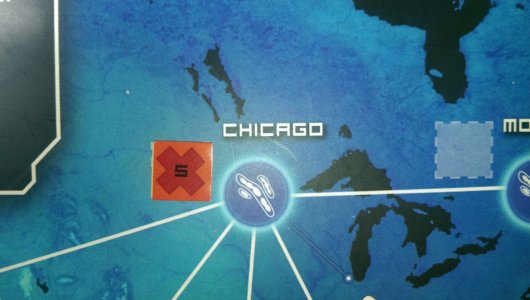
I’m going to spend the last few paragraphs of this review discussing some of the complaints and worries you might have about a game that does have a limited lifespan. First of all is the fact that it is still Pandemic. This was an often touted complaint about Risk Legacy. Oh sure it’s great but at the end of the day it is still Risk. In the somewhat snobby world of board games I associate with Risk is often viewed as a bad board game, or at least as a casual family friendly game. Sure it is not viewed anywhere nearly as badly as Monopoly but possibly in the same sort of league. Pandemic obviously doesn’t have the associated stigma but needless to say if you hate Pandemic you might not enjoy Pandemic Legacy. It will probably have the same traits and problems that Pandemic has that you might not enjoy, such as alpha player syndrome and how a bit of bad luck really can ruin an entire game. I’ve read reports of people playing Pandemic who, due to a bad set up and an early few epidemics lost the game in the first or second turn. Due to the permanent nature of Pandemic Legacy situations like this could be even more crippling than they are in the base game. Of course these instances are very very rare and as new rules are added it probably becomes even more unlikely. We definitely had games where a bit of bad luck early on made winning incredibly difficult but it always felt like a challenge and not insurmountable. In fact it is in these moments when the game shines the most, where you use all the tools the game has provided you with to tackle what bad luck has thrown in your path.
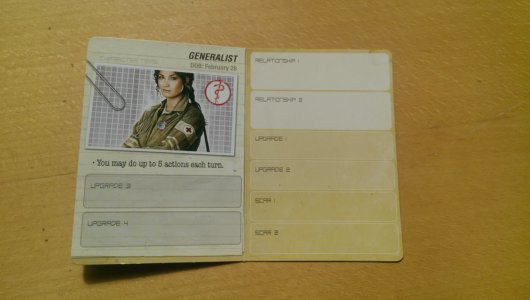
The next obvious thing to discuss is the limited play count of the game and whether it really is value for money. In short, yes it really is. We played around 19 games of Pandemic Legacy in total over the space of about 4 months. That copy of the game is now finished, the story complete. Yet the quality of the experience and the story it tells is so stellar that I simply cannot complain about its length or lack of replayability. How often a game gets played is a funny subject when it comes to tabletop gaming and doesn’t really work in the same way as video games. Sure I’ve played the heck out of a lot of my favourite games but I own a few games that a big and bulky and take an age to play and getting them to the table can be a real pain. It goes back to what I said earlier on about Legacy games creating a digestible rules booklet with a great learning curve. What is better value of money – a game with an infinite number of plays that you barely ever play or something with a finite number of plays but you play almost non-stop for a number of months. I’d definitely go with Pandemic Legacy every time.

The final point I’d like to discuss isn’t really a complaint but more a public service announcement. You could play Pandemic Legacy with a different group of people each time but the game really shines when the same 4 players see out the entire campaign. The story moments, the developing board and characters and how the rules are slowly drip fed to the players only really work when the same group are playing each time. Therefore if you don’t think you can assemble a committed group of players who can meet on a regular basis then maybe Pandemic Legacy isn’t going to work for you. Regular can mean whatever it needs to mean for your circumstances. We were meeting once a week and usually playing 2 games each time we met up and that was a great pace for us. Meeting fortnightly or monthly could easily work too. This does mean that for certain people living in certain areas of the country where there isn’t a vibrant board game community might struggle. It is probably the only situation where I’d actively tell someone not to buy this otherwise fantastic game. This problem does have a silver lining though. Pandemic Legacy is quite an expensive game setting you back between £50 and £55. If you can find 2 or 3 other people who are local and can meet for games regularly then I would absolutely recommend splitting the cost with each player paying around £12.50 each. Normally sharing the cost of a board game can be a bit complicated but with Pandemic Legacy it fits perfectly. See unlike basically every game I’ve bought this game never really felt like it belonged to me. It was so affected by the actions of all four of us that it quickly stopped being my game and fast became our game.
There is so much I wish I could tell you about this fantastic game. I wish I could go into specifics about its pacing. I wish I could talk about my favourite months and how the challenges changed throughout. I’d like to talk about my favourite characters and the changes that happened to them throughout the campaign. I’d like to talk about the twists and turns and exciting moments that made up the game. But I can’t and, of course, I wont. Pandemic Legacy is best appreciated going in as blind as possible. Is it the best game ever made? Maybe not but only because that is such a ridiculous accolade to give a board game! Pandemic Legacy is definitely the best game I have played in a very long time and, if you can find a group of people able to play it with you I cannot recommend it enough.
